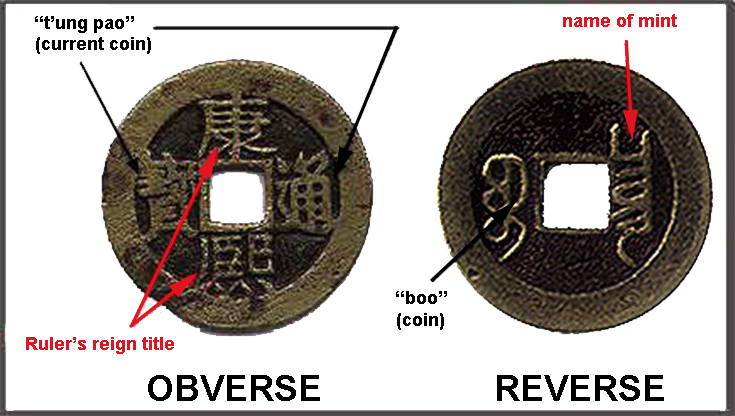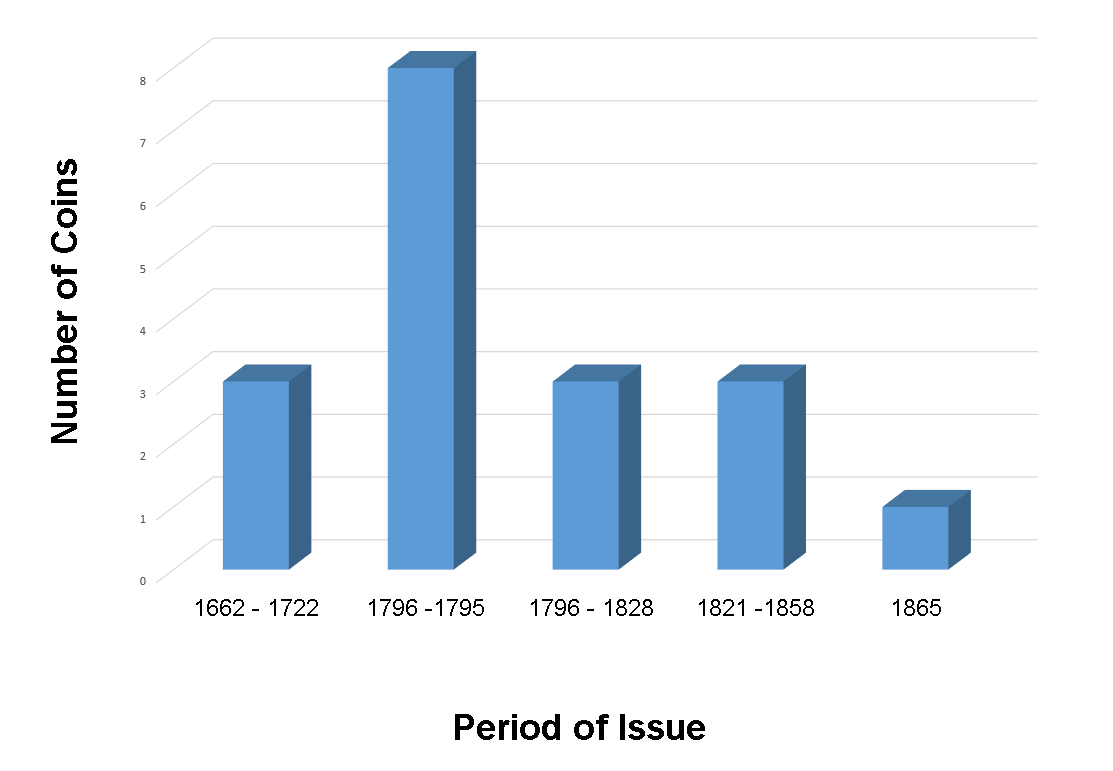Twenty of the 26 coins recovered from the site of Yema-po are Chinese wen and are typical of the coins that were in circulation in China during the period of Chinese immigration to America during and after the Gold Rush. The Chinese wen , with only one exception, date to the period of the Ch'ing (Manchu) Dynasty (1662-1850), are composed of brass, have a square hole in the center and were of very low monetary value (1/10 of an American cent).
The four Chinese characters on the obverse side of a Manchu Dynasty wen are read in pairs. The right and left characters are always the same and are translated as "current treasure of" or "current coin." The upper and lower characters vary and provide the ruler's reign title. In the example illustrated below the ruler is K'ang Hsi (1662-1722).

The characters on the reverse are written in Manchu and indicate the mint where the coin originated. The character on the left is standard and translates as "boo" or coin. The character on the right varies and names the specific mint. In the example above the indicated mint is Peking
The wen found in nineteenth century overseas Chinese sites are somewhat surprising in that the average date of issue precedes the date of site occupation by approximately two centuries. The frequency of different reigns found on the wen at Yema-po is shown in the figure below:
